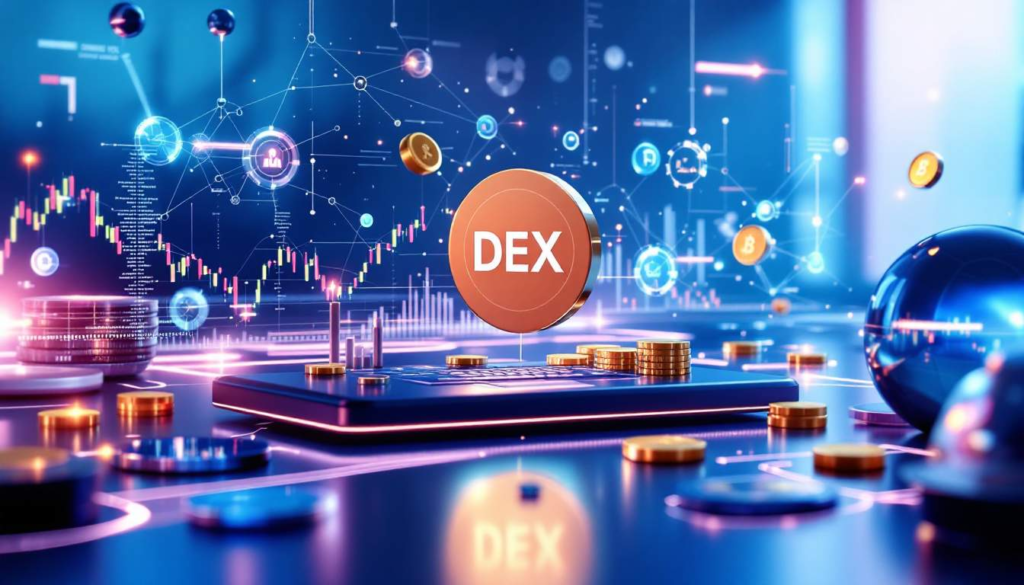The world of cryptocurrency trading is evolving rapidly and decentralized exchanges (DEXs) are leading the charge. With the integration of new features such as stop-loss and take-profit orders, DEXs are not only catching up with centralized exchanges (CEX) but also reshaping the way we trade. Let’s look at how these innovations build user confidence, what they mean for regulation, and the challenges they might pose for those just starting out.
Advanced trading features on DEXs: a game changer
The introduction of the dSLTP protocol in THENA represents an important step in the evolution of decentralized trading. This feature allows users to set automatic stop-loss and take-profit conditions for any swap, giving them a level of control over risk and execution that was previously only available on platforms like Binance or Coinbase. Now anyone can access these advanced trading tools.
Stop-loss and take-profit orders are essential in the crypto world, helping users manage potential losses and secure profits. For example, a stop-loss order goes into effect when a token’s price falls below a specified level, while a take-profit order locks in gains once a target price is reached. Using the dSLTP protocol, traders on THENA can execute these strategies directly on-chain, making their trading more sophisticated and boosting their confidence.
Finding the right balance between complexity and usability
As DEXs adopt these advanced trading features, maintaining a simple user experience is crucial. The trick is to incorporate complex features without alienating those new to crypto. THENA’s easy-to-use interface for stop orders demonstrates how DEXs can offer customizable settings such as trigger price and expiration conditions while remaining user-friendly.
To make this work, DEXs can use intuitive design strategies and include built-in wallets and clear instructions. This way, advanced trading tools become accessible to more people. Additionally, providing onboarding aids such as step-by-step guides can help new users familiarize themselves with the complexities of decentralized trading.
Regulatory Aspects of CEX Features in DeFi Markets
The introduction of CEX-like features on DeFi platforms has regulatory consequences, particularly in Asian and European markets. Since DEXs incorporate features such as KYC (Know Your Customer) and AML (Anti-Money Laundering) checks, they may be considered Crypto-Asset Service Providers (CASP) under regulations such as the EU’s Markets in Crypto-Asset (MiCA) Regulation.
This means they would have to comply with licensing requirements and other regulations, which could go against the decentralized philosophy. The idea of “same risks, same rules” suggests that platforms with centralized features could face greater scrutiny, which could affect how they operate and how users perceive them.
Challenges for New Traders with Advanced DeFi Tools
While features like stop-loss and take-profit orders improve trading capabilities, they can also be tricky for new traders. Market volatility and liquidity issues may result in unfavorable order execution. Additionally, the complexity of managing these tools can be intimidating for beginners.
Additionally, the DeFi space lacks regulation, exposing users to risks such as smart contract vulnerabilities and potential loss of funds. New traders should be educated on the importance of risk management, including setting appropriate levels for stop-loss and take-profit orders based on their comfort level and market analysis.
In conclusion: a new era for cryptocurrency trading
The addition of advanced trading features in decentralized exchanges like THENA is a significant change in the cryptocurrency trading landscape. By merging elements of centralized and decentralized platforms, DEXs improve user experience, paving the way for regulatory compliance and providing traders with advanced tools. As the market evolves, we could see more features converge, making decentralized finance more accessible to a wider audience.
In this ever-changing environment, education and user-friendly design will be essential to ensure that all traders – new and experienced – can confidently navigate the complexities of DeFi.




